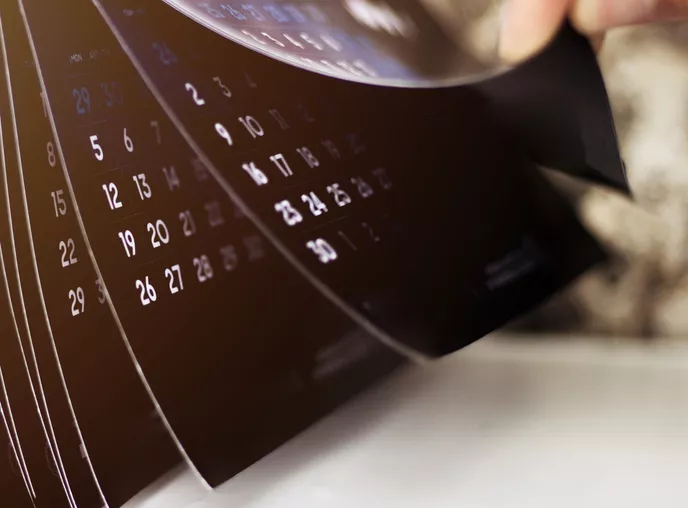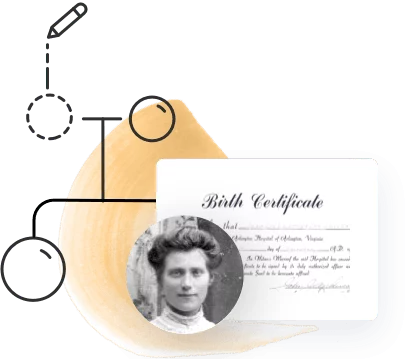
As you make progress in researching genealogical records back on your ancestral lines, you may encounter some puzzling double-dates or a conflict between two different calendar systems. These confusing dates occur in many European countries and elsewhere around the world. They originate as a result of a historical change from the Julian Calendar to the Gregorian Calendar and subsequent calendar adjustments beginning in the 1500s. It is also possible, depending on the origin of your ancestors, that you will discover a calendaring system that is completely different from the one commonly used today in Western Europe, North and South America, and many other countries around the world.

Of course, more frequently, you may find historical records that contain conflicting dates. You may also find records with dates that are impossible, such as those showing a child born too long after the death or one or more parents or before the child’s parents were born. Many of the large online family tree websites now have features that warn you about conflicting dates. For example, MyHeritage.com has an elaborate checking system called the “Consistency Checker” that gives you notice of many different types of errors, including conflicting dates. Most of these problems can be solved with your own careful review of all the dates in your family tree (often described with the phrase “Do the Math”) but some may be due to calendar changes or differing calendar systems and require date adjustments.
As genealogists it is important to record the dates as they were at the time the event occurred. When we encounter a date in a record using a different calendaring system that we are not familiar with, we should always record the date as it appears and, if possible, also convert the date to your country’s current calendaring system. However, we should always cite the record source of the date and, where possible, include a copy of the record or a link to a digital image of the record so later researchers can verify the conversion and view the source record.
Hundreds of different calendaring systems have been used around the world. All calendars fall into four types:
- Lunisolar (sun and moon)
- Solar (sun only)
- Lunar (moon only)
- Seasonal (based on natural observations)
The further back in time you extend your genealogical research the more likely it will be that you will encounter a different calendaring system. Here are just a few examples of calendaring systems you might discover.
Julian/Gregorian Calendar Changes
In countries around the world today, the most used calendars are patterned after the Gregorian Calendar, which was first used in October of 1582. The Gregorian Calendar, developed by the Roman Catholic Church and named after Pope Gregory XIII, replaced the Julian Calendar created during the reign of Julius Caesar in AUC 708 (48 B.C.). The Julian Calendar had a year of 365.25 days and became the predominant calendar used by the Roman Empire and throughout the Western world for over 1,600 years. Because the Julian calendar had become out of sync with the actual solar year, the Gregorian Calendar proposed a change from a year of 365.25 days to a year of 365.2425 days. The extra days are made up during Leap Years with a day added in February. The actual calculation is more complex and even the Gregorian Calendar will get out of synchronization with the sun and will require future adjustments.
What is even more complicated for genealogical research is that the various countries of the world and even provinces or districts within a country adopted the Gregorian Calendar in different years and, of course, some have yet to adopt it completely. The Gregorian Calendar was adopted beginning as early as 1582 with the edict from Pope Gregory XIII but some countries did not adopt the calendar until the 1900s. For a list of the countries and the adoption dates, see the FamilySearch Research Wiki article, “Julian and Gregorian Calendars.” You need to be aware of the adoption date for the countries where you are doing research.
The effect on researchers depends on the date and place of their research. For an analysis of the problems you may encounter, see the MyHeritage Blog article by Laurence Harris, Head of Genealogy U.K. at MyHeritage: “Understanding Dates: Five common mistakes to avoid.” You can convert dates between the two calendar systems by using an online program such as “Converting between Julian and Gregorian Calendar in One Step” by Stephen P. Morse. This converter also allows you to set the target country and gives you the last Julian date used and the date of the first Gregorian date. There is a gap between the two dates that ends up being “lost.” For example, the last Julian date in the British Colonies in America was September 2, 1752 and the first date of the new Gregorian Calendar was September 14, 1752. In addition, in some countries such as England and the American Colonies, the new year began on March 25 and, with the introduction of the Gregorian Calendar, was changed to January 1. The change in the dates between the two calendars is referred to as Old Style (Julian) and New Style (Gregorian) and when there is any confusion, both years are indicated, for example, March 3, 1733/34. Sometimes a date in question will be marked OS for Old Style and NS for New Style. In any given country, it is important to check the date of the changeover from the Julian to Gregorian calendar to avoid the conflicting dates. The missing dates can cause some confusion about the dates of events in an ancestor’s life. Anytime you find an ancestor who lived during the time the calendars changed, you need to be careful with the dates as they are recorded.
The French Revolutionary Calendar
Research in France is complicated by the French Republican or Revolutionary Calendar. This calendar was implemented during the French Revolution and was used by the French government for about 12 years from late in 1793 to 1805, and for 18 days by the Paris Commune earlier in 1871.
See the Wikipedia article entitled, “French Republican Calendar.” The names associated with the calendar such as months and days were new words coined for the creation of the calendar. You can find converters for dates between the French Republican Calendar and the Gregorian Calendar online, for example: “Napoléon & Empire, The French Republican calendar.”
The Catholic Church Liturgical Calendar
If you are doing research into old Catholic Church records such as those I have encountered in Spain, Italy, and many countries in Central and South America, you may find dates used in reference to the Catholic Church Liturgical Calendar. However, the specific dates of the calendar are different depending upon the particular Catholic tradition that is followed in the country of your research. For example, the Eastern Orthodox Church is different from the Roman Catholic Church. For a more complete discussion, see the Wikipedia article entitled “Liturgical year.” Some of the events in the Catholic Liturgical Calendar were adopted by the Protestant churches also. I have found that most of the time, the Gregorian or Julian calendar date can be determined from the record itself, but if the Gregorian or Julian date is not mentioned, it may take a fair amount of research to determine the corresponding date.
The Regnal Years of English Monarchs
The English regnal calendar (“nth year of the reign of King or Queen X”, abbreviated to “n X”, etc.) is found in many historical documents and continues to be used in many official British government and legal documents, notably parliamentary statutes. Fortunately, the date from either the Julian or Gregorian calendar is usually also contained in the document; but, if not, the researcher will have to do some additional historical research to determine the corresponding date. However, there are online websites that have converters to calculate dates based on the regnal years that include lists of all the monarchs. See “Calculate dates based on regnal years.”
The Jewish Calendar
I became involved with dates in the Jewish Calendar when I began to research my Jewish ancestors in the Netherlands. Traditionally, the Jewish day begins at sunset, defined as the time the sun disappears. Books and computer programs for the converting dates between the Jewish Calendar and Gregorian Calendar are based on the “daylight” portion of the Jewish day. See the JewishGen.org article entitled, “Introduction to the Jewish Calendar.” Here is a short explanation of the Jewish Calendar from the Yale University Library’s article entitled “About the Hebrew Calendar”:
The Jewish calendar, derived from the ancient Hebrew calendar, has remained unchanged since about AD 900. It is the official calendar of the modern state of Israel and is used by Jewish people throughout the world as a religious calendar. The starting point of Hebrew chronology is the year 3761 BC, the date for the creation of the world as described in the Old Testament. The Jewish calendar is luni-solar, based on lunar months of 29 days alternating with 30 days. An extra month is intercalated every 3 years, based on a cycle of 19 years. Dates of the Jewish calendar are designated AM (Latin anno mundi, “the year of the world”) and BCE (before the Common Era).
Here is a link to one of the Jewish Calendar Converters: Jewish/Hebrew Date Converter
The Traditional Chinese Calendar
According to Worldometers, currently the population in China is equivalent to about 18.47% of the population of the entire world. Until the adoption of the Gregorian Calendar on 1 January 1912, China used the traditional Chinese Calendar. However, for many purposes, including the celebration of holidays, the traditional or as officially known, the Agricultural Calendar is still in use. Historically, there were several different versions of the calendar. See Wikipedia, Chinese calendar. The origin of the Chinese calendar can be traced back to the 14th Century B.C. There are a number of converters online that will convert the Chinese Calendar to the Gregorian and from the Gregorian to the Chinese Calendar. See “Chinese Calendar Date Converter.”
You may encounter other ways of recording dates in your own research. It is always satisfying to “break the code” and find a date you can use in your research. Keep learning and keep searching.






